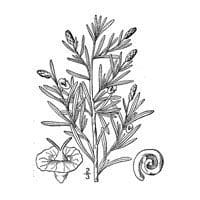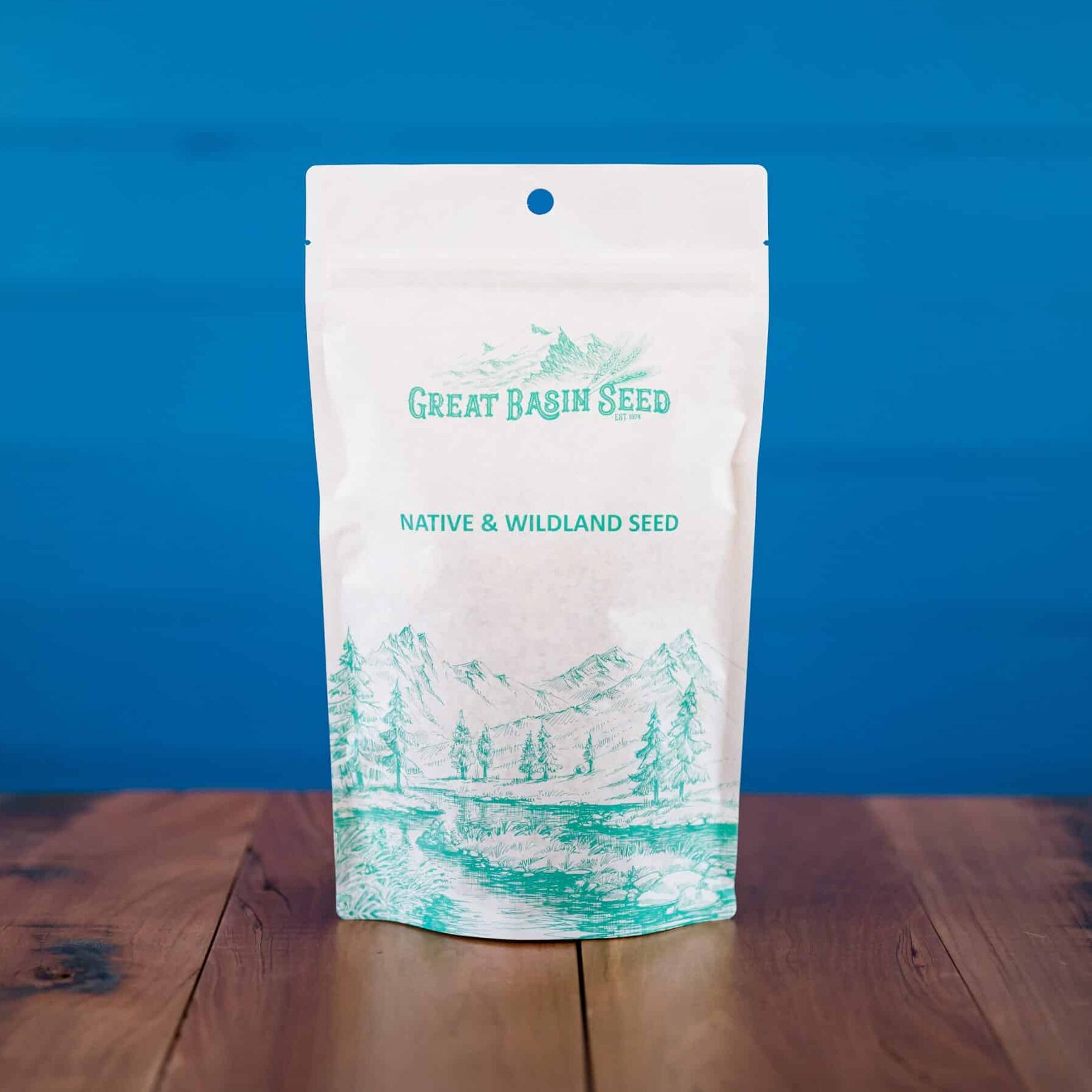Greasewood (Sarcobatus vermiculatus, Also known as Black Greasewood) is a deciduous shrub growing 2 to 8 feet tall. The leaves are bright green and often have a crust of salt that can be tasted. The leaves are shed in winter. The twigs are rigid, white to tan in color and spiny. Trunk bark is yellowish-gray to light brown with deep grooves. It most commonly develops on finely textured saline or alkaline soils, it occasionally grows on coarsely textured non-saline soils.
Greasewood grows on dry, sunny, flat valley bottoms, on lowland floodplains and in ephemeral stream channels. It is a dominant plant throughout much of the Great Basin and Mojave Desert. Greasewood communities generally occur below the moister sagebrush or shadscale zones. In high saline areas, greasewood often grows in nearly pure stands, although on less saline sites it commonly grows with a number of other shrub species and typically has a grass understory.
Greasewood (Sarcobatus vermiculatus) is tolerant of a wide range of climatic conditions but most commonly grows in areas with hot, dry summers. It commonly occurs in areas with a seasonally high water table and is often the only green shrub in pluvial desert sites with available groundwater. Average annual precipitation ranges from 5 to 10 inches. Elevation ranges from 4,000 to 7,100 feet.
Greasewood is capable of vegetative regeneration, typically sprouting after fire, application of herbicides, and other types of disturbance.
Greasewood provides fair forage for livestock and big game during the winter. Poisonous oxalates found in the leaves and young twigs have caused mass mortality in flocks of sheep.
For more options: Shrubs
***Click on the “Quick Plant Facts” tab above for more information.
Greasewood NRCS Plant Guide and Fact Sheet
Greasewood NRCS Plant Guide and Fact Sheet
PDF version of NRCS Plant Guide and Fact Sheet
Prepared By: Brock Benson, Area Range Conservationist USDA NRCS, Ogden, UT
Derek Tilley, Range Conservationist (Plants) USDA NRCS Plant Materials Center, Aberdeen, ID
Dan Ogle, Plant Materials Specialist USDA NRCS Idaho State Office, Boise, ID
Loren St. John, Manager USDA NRCS Plant Materials Center, Aberdeen, ID
Shane Green, State Range Conservationist USDA NRCS, Salt Lake City, UT
James Briggs, Plant Materials Specialist USDA NRCS, WNTSC, Portland, OR
Species Coordinator: Dan Ogle, Plant Materials Specialist USDA NRCS Idaho State Office, Boise, ID
Helpful Links
Additional information about this product can be found on the academic websites linked below.
Synonyms
Many plants have more than one common and scientific name. We've listed a few of them below.
- Sarcobatus virmiculatus
- Greasewood
- Seepwood
- Saltbush
Who is Great Basin Seed?
Great Basin Seed is a seed company that specializes in seed sales and consultation for home, ranch, farm, range and reclamation. We have been a leader in the seed industry since 1974.
Our History
We've been in the seed business since 1974.
What We Offer
We offer seed for home, farm, ranch, range and reclamation projects.
Meet the Gang
We have the best employees in the world! We are proud of the work they do, and trust them to serve you!
Right: Company founder Lloyd and his wife Paula Stevens in a wildflower seed production field circa 1977
Quick Plant Facts
| Common Name: | Nevada Greasewood, Spiny Greasewood |
|---|---|
| Scientific Name: | |
| Lifespan: | |
| Origin: | |
| Plant Type: | |
| pH Tolerance: | |
| Seed Count | 210000 |
| Growth Height: | |
| Min. Precipitation | 6 Inches Minimum |
| Best Time to Sow: | |
| Max Sowing Depth: | |
| Growth Season: | |
| Sun & Shade Tolerance: | Full Sun |
| Elevation of Occurance: | |
| Zone Map | comingsoon.gif |
| Select a Package Size and Quantity | 1 oz. Envelope, 4 oz. Pouch (0.25 lbs.), 8 oz. Pouch (0.50 lbs.), 1 lb. (by the pound) |










